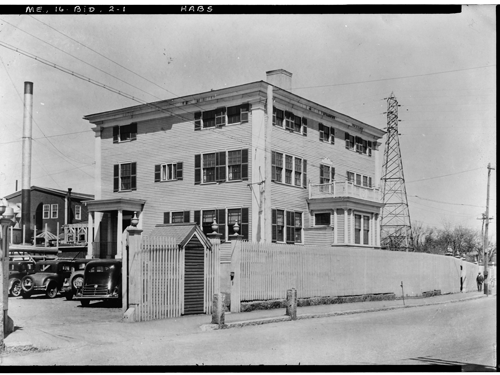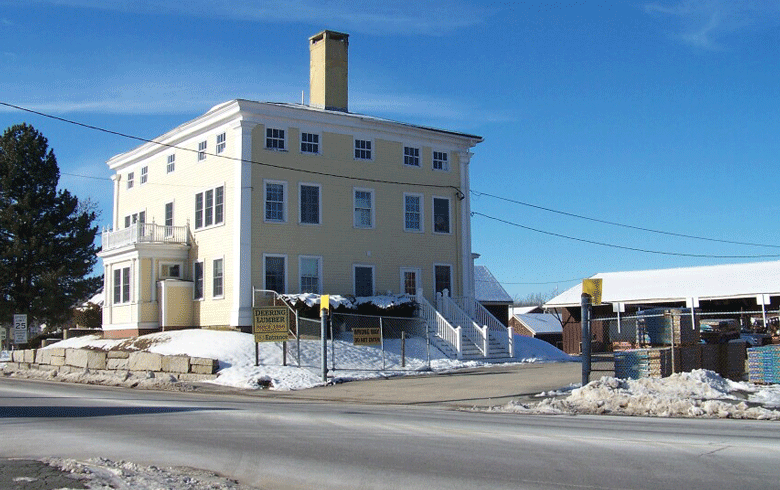We published a 1936 photo of Biddeford’s Lafayette House, shot by Dominic Avanzato, in our December/January issue, and asked readers if the building were still standing. Here are some of the responses we received:
“I can say with certainty that the Lafayette House still exists as the office for Deering Lumber on Elm Street (Route 1) in Biddeford,” wrote James Kroll of that community. “I went past it about an hour ago.”
Kroll adds that according to A History and Stories of Biddeford it was built in 1798 by Col. Seth Spring, a veteran of the battle of Bunker Hill.

“It was his residence and an inn and became a regular stop for stagecoaches. It was known as the Spring House back in the day as it is located on Spring Island. In 1825 Lafayette himself stopped there.”
Kroll also noted some construction details.
“I was on the third floor of the building once and it has impressive and unique period woodworking, but the rest of the interior has been modernized with no trace of its original detail. Still, I’m glad to see that it now serves another purpose and wasn’t demolished. The exterior looks pretty much the same as it did in the 1936 photo, but there are a few modifications, the main one being an addition off one side of the building which is the store part of the business.”
Bill Alcorn added that Seth Spring may have operated a toll bridge for travelers crossing the island.
“I worked in that building from 1963 to 1971, first for the owners, Deering Lumber, then set up the office of wood structures in 1966. Deering Lumber was owned by Tom Armstrong, now by his son C. D. Armstrong.
“You can see the smokestack in the very left of the photo. That wood-fired boiler produced steam for a big engine that ran every piece of machinery through a system of belts and pulleys.
“The boiler, sawmill, planing mill, and cabinet shop were all gone by 1963, along with the last of the Deering family.”
And Alcorn adds more construction details: “The pine clapboards covering the building were still sound back in the ‘60s, as was the birchbark head flashing over the windows and doors.”
Brad Dausses knows the building well but had this observation: “I’ve always thought that it was a weird looking building for where it is, located on the island in the middle of the Saco River.”
And a bit more history about its namesake, the Marquis de Lafayette of France, a French aristocrat and military officer who fought in the American War of Independence, commanding American troops, from Nick Kingsbury. He writes that in 1825, Lafayette gave a speech in Kennebunk under a tree later dubbed the “Lafayette Elm” near today’s Storer Street.
“That evening, he went to Biddeford and stayed at Spring’s Tavern,” he writes.
“My dad was the accountant at Deering Lumber, 1939-1948. Somewhere there’s a photo of two-month-old me in Dad’s arms on the front steps of this building.”
And more personal history from Amos Gay of Dayton: “When I was a kid, some 70 years ago, it was a common sight to see horse drawn wagons hauling newly sawn lumber to a nearby board yard on Scammon Street in Saco, which presently serves as a shopping center.”





